-
 Bitcoin
Bitcoin $117500
2.15% -
 Ethereum
Ethereum $3911
6.19% -
 XRP
XRP $3.316
10.79% -
 Tether USDt
Tether USDt $1.000
0.01% -
 BNB
BNB $787.2
2.24% -
 Solana
Solana $175.2
4.15% -
 USDC
USDC $0.9999
0.00% -
 Dogecoin
Dogecoin $0.2225
8.40% -
 TRON
TRON $0.3383
0.28% -
 Cardano
Cardano $0.7868
6.02% -
 Stellar
Stellar $0.4382
9.34% -
 Hyperliquid
Hyperliquid $40.92
7.56% -
 Sui
Sui $3.764
7.63% -
 Chainlink
Chainlink $18.48
10.66% -
 Bitcoin Cash
Bitcoin Cash $582.1
1.88% -
 Hedera
Hedera $0.2601
6.30% -
 Avalanche
Avalanche $23.33
4.94% -
 Ethena USDe
Ethena USDe $1.001
0.02% -
 Litecoin
Litecoin $122.3
2.04% -
 UNUS SED LEO
UNUS SED LEO $8.969
-0.27% -
 Toncoin
Toncoin $3.339
0.86% -
 Shiba Inu
Shiba Inu $0.00001287
4.30% -
 Uniswap
Uniswap $10.43
7.38% -
 Polkadot
Polkadot $3.861
5.08% -
 Dai
Dai $1.000
0.02% -
 Bitget Token
Bitget Token $4.513
3.41% -
 Monero
Monero $267.7
-6.18% -
 Cronos
Cronos $0.1499
4.14% -
 Pepe
Pepe $0.00001110
5.15% -
 Aave
Aave $284.9
8.28%
What is the implied volatility of OKX contract? How to use it to judge market sentiment?
Implied volatility on OKX reflects market expectations of future crypto price movements, aiding traders in gauging sentiment and crafting strategies.
May 01, 2025 at 08:01 pm
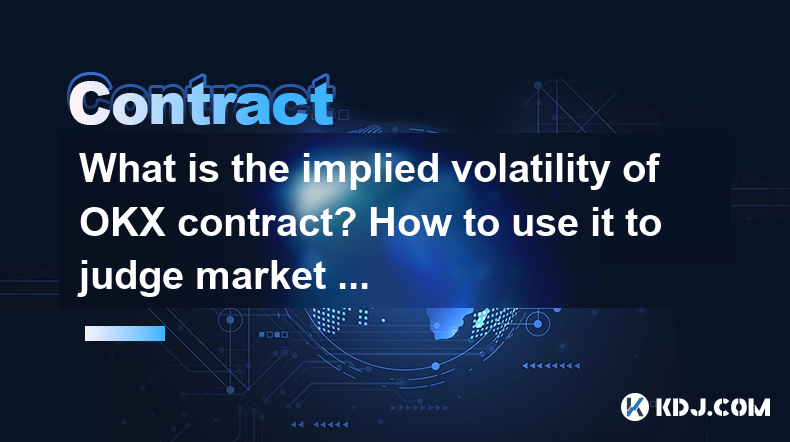
The concept of implied volatility (IV) plays a crucial role in the world of cryptocurrency derivatives, particularly in the context of OKX contracts. Implied volatility is a metric that reflects the market's expectation of the future volatility of the underlying asset's price. In the case of OKX contracts, understanding and utilizing implied volatility can provide traders with valuable insights into market sentiment and potential price movements.
What is Implied Volatility?
Implied volatility is derived from the pricing of options contracts. It represents the market's forecast of a likely movement in the underlying asset's price over the life of the option. Unlike historical volatility, which looks at past price movements, implied volatility is forward-looking and is calculated using an option pricing model, such as the Black-Scholes model. For OKX contracts, the implied volatility is a key indicator of the expected volatility of the cryptocurrency asset, such as Bitcoin or Ethereum, over the duration of the contract.
How is Implied Volatility Calculated for OKX Contracts?
The calculation of implied volatility for OKX contracts involves several steps and typically uses an iterative method to solve for the volatility that makes the theoretical value of an option equal to its market price. Here's a simplified overview of how it's done:
- Select an option pricing model: The Black-Scholes model is commonly used, though other models like the Binomial model can also be applied.
- Input the current market price of the option: This is the price at which the option is currently trading on OKX.
- Input other parameters: These include the current price of the underlying asset, the strike price of the option, the time to expiration, and the risk-free interest rate.
- Iterate to find implied volatility: Using the chosen model, adjust the volatility input until the model's calculated option price matches the observed market price. The volatility value that results in this match is the implied volatility.
Using Implied Volatility to Judge Market Sentiment
Implied volatility can be a powerful tool for gauging market sentiment on OKX. High implied volatility indicates that traders expect significant price movements in the underlying asset, which often correlates with increased uncertainty or anticipation of major events. Conversely, low implied volatility suggests that the market anticipates relatively stable price movements.
- High Implied Volatility: If the implied volatility of OKX contracts is high, it may indicate that traders are expecting a significant event or news that could impact the price of the underlying cryptocurrency. This could be a regulatory announcement, a major upgrade to the blockchain, or other market-moving events.
- Low Implied Volatility: Low implied volatility suggests that the market expects the price of the underlying asset to remain relatively stable. This might occur during periods of calm or when there are no major anticipated events.
Practical Application of Implied Volatility on OKX
To effectively use implied volatility to judge market sentiment on OKX, traders should follow these steps:
- Monitor Implied Volatility Levels: Use OKX's platform to track the implied volatility of various contracts. OKX provides tools and charts that display implied volatility for different options.
- Compare with Historical Data: Compare current implied volatility levels with historical data to understand if the current levels are unusually high or low.
- Analyze Implied Volatility Skew: The implied volatility skew, which shows how implied volatility varies across different strike prices, can provide additional insights into market sentiment. A steep skew might indicate that traders are more concerned about significant price movements in one direction.
- Integrate with Other Indicators: Combine implied volatility with other technical and fundamental indicators to form a more comprehensive view of market sentiment.
Trading Strategies Based on Implied Volatility
Traders can develop various strategies based on the implied volatility of OKX contracts. Here are a few common approaches:
- Volatility Trading: If a trader believes that the implied volatility is too high relative to the expected future volatility, they might sell options to capitalize on the potential decline in volatility. Conversely, if they believe implied volatility is too low, they might buy options to profit from an increase in volatility.
- Straddle and Strangle Strategies: These involve buying both a call and a put option with the same expiration date. A straddle uses the same strike price, while a strangle uses different strike prices. These strategies can be profitable if the trader expects significant price movement but is unsure of the direction.
- Delta Hedging: This strategy involves adjusting the position in the underlying asset to neutralize the delta (sensitivity to the underlying asset's price) of an options position. Traders can use implied volatility to determine the appropriate hedge ratio.
How to Access Implied Volatility Data on OKX
Accessing implied volatility data on OKX is straightforward. Here are the steps to follow:
- Log into your OKX account: Ensure you are logged into your OKX account to access the trading platform.
- Navigate to the Options Market: Go to the options market section of OKX, where you can view various options contracts for cryptocurrencies like Bitcoin and Ethereum.
- Select a Contract: Choose the specific options contract you are interested in. OKX provides a range of expiration dates and strike prices.
- View Implied Volatility: On the options contract page, you will find the implied volatility data displayed. OKX's platform often includes charts and graphs to help visualize the implied volatility over time.
- Use Analytical Tools: OKX offers various analytical tools and indicators that can help you analyze implied volatility in conjunction with other market data.
Frequently Asked Questions
Q1: How often does implied volatility change on OKX?
Implied volatility can change frequently, often multiple times within a single trading day. It is influenced by market conditions, trading volumes, and other factors. Traders should monitor implied volatility in real-time to stay updated on market sentiment.
Q2: Can implied volatility be used for all types of OKX contracts?
Implied volatility is primarily used for options contracts on OKX. While it is not directly applicable to futures contracts, traders can infer market sentiment from options data and apply it to their futures trading strategies.
Q3: What is the difference between implied volatility and historical volatility on OKX?
Implied volatility reflects the market's expectation of future volatility, calculated from option prices. Historical volatility, on the other hand, measures the actual volatility of the underlying asset's price over a past period. Both metrics are useful, but implied volatility is forward-looking, while historical volatility is backward-looking.
Q4: How can I use implied volatility to predict price movements on OKX?
While implied volatility does not directly predict price movements, it can indicate the market's expectation of potential volatility. High implied volatility suggests that significant price movements are anticipated, while low implied volatility suggests more stability. Traders can use this information to adjust their trading strategies and risk management accordingly.
Disclaimer:info@kdj.com
The information provided is not trading advice. kdj.com does not assume any responsibility for any investments made based on the information provided in this article. Cryptocurrencies are highly volatile and it is highly recommended that you invest with caution after thorough research!
If you believe that the content used on this website infringes your copyright, please contact us immediately (info@kdj.com) and we will delete it promptly.
- Bitcoin, Meme ICOs, and FOMO: Catching the Next Crypto Wave
- 2025-08-08 18:30:34
- OM, Investment, and Growth: Decoding the Latest Trends in Digital Assets
- 2025-08-08 18:30:34
- SNEK, Cardano, and the Contributor's Conundrum: A Meme Coin's Fight for Recognition
- 2025-08-08 16:30:12
- Toshi Crypto's Wild Ride: Rally, Demand Slump, and What's Next
- 2025-08-08 16:30:12
- Ethereum, Staking Yields, and DeFi Exposure: A New Era for Investors?
- 2025-08-08 15:10:12
- Unilabs Pumps MIA, Binance Coin Bouncing Back, and Ethereum's Bearish Blues
- 2025-08-08 15:10:12
Related knowledge
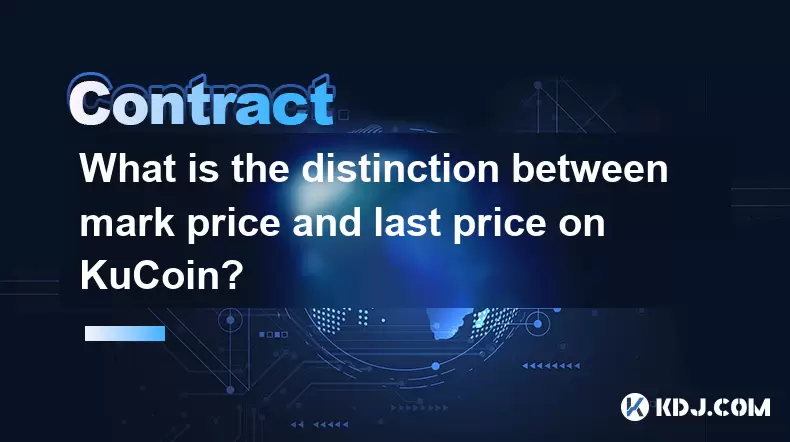
What is the distinction between mark price and last price on KuCoin?
Aug 08,2025 at 01:58pm
Understanding the Basics of Price in Cryptocurrency TradingIn cryptocurrency exchanges like KuCoin, two key price indicators frequently appear on trad...
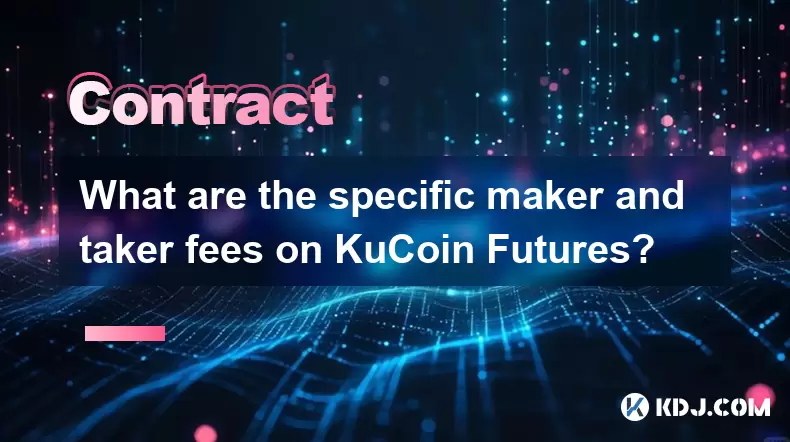
What are the specific maker and taker fees on KuCoin Futures?
Aug 08,2025 at 08:28am
Understanding Maker and Taker Fees on KuCoin FuturesWhen trading on KuCoin Futures, users encounter two primary types of fees: maker fees and taker fe...
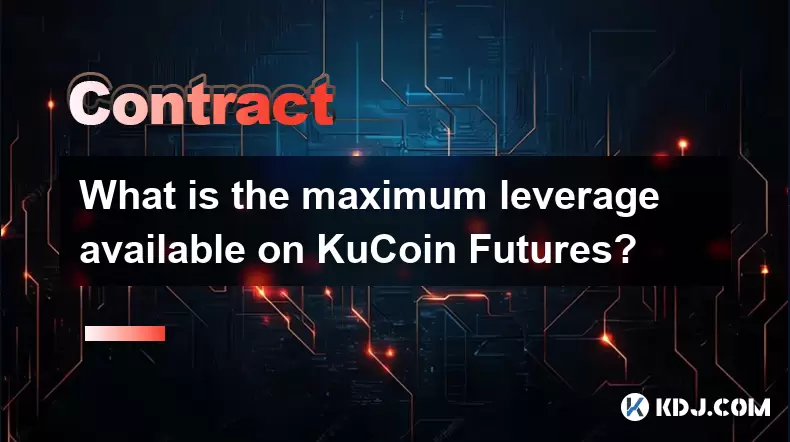
What is the maximum leverage available on KuCoin Futures?
Aug 08,2025 at 10:21am
Understanding Leverage in KuCoin Futures TradingLeverage in KuCoin Futures allows traders to control a larger position size using a smaller amount of ...
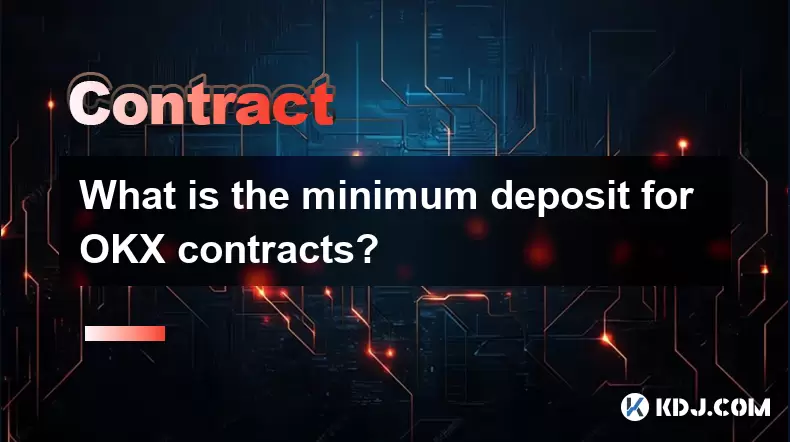
What is the minimum deposit for OKX contracts?
Aug 08,2025 at 07:00am
Understanding OKX Contract Trading BasicsOKX is one of the leading cryptocurrency derivatives exchanges, offering a wide range of perpetual and future...
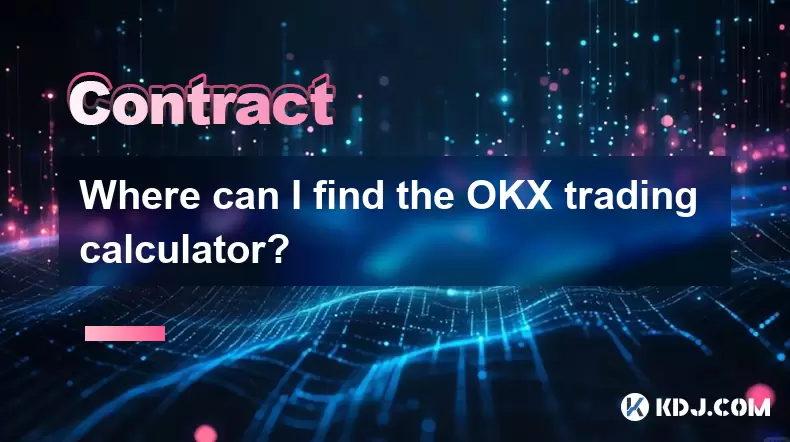
Where can I find the OKX trading calculator?
Aug 08,2025 at 07:49am
Understanding the OKX Trading Calculator FunctionalityThe OKX trading calculator is a powerful analytical tool designed to assist traders in estimatin...
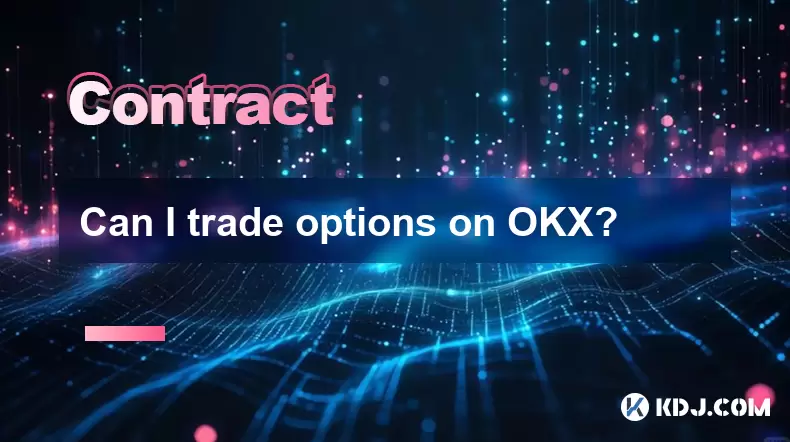
Can I trade options on OKX?
Aug 08,2025 at 11:01am
Understanding Options Trading on OKXYes, you can trade options on OKX. OKX is one of the leading cryptocurrency derivatives exchanges that offers a de...

What is the distinction between mark price and last price on KuCoin?
Aug 08,2025 at 01:58pm
Understanding the Basics of Price in Cryptocurrency TradingIn cryptocurrency exchanges like KuCoin, two key price indicators frequently appear on trad...

What are the specific maker and taker fees on KuCoin Futures?
Aug 08,2025 at 08:28am
Understanding Maker and Taker Fees on KuCoin FuturesWhen trading on KuCoin Futures, users encounter two primary types of fees: maker fees and taker fe...

What is the maximum leverage available on KuCoin Futures?
Aug 08,2025 at 10:21am
Understanding Leverage in KuCoin Futures TradingLeverage in KuCoin Futures allows traders to control a larger position size using a smaller amount of ...

What is the minimum deposit for OKX contracts?
Aug 08,2025 at 07:00am
Understanding OKX Contract Trading BasicsOKX is one of the leading cryptocurrency derivatives exchanges, offering a wide range of perpetual and future...

Where can I find the OKX trading calculator?
Aug 08,2025 at 07:49am
Understanding the OKX Trading Calculator FunctionalityThe OKX trading calculator is a powerful analytical tool designed to assist traders in estimatin...

Can I trade options on OKX?
Aug 08,2025 at 11:01am
Understanding Options Trading on OKXYes, you can trade options on OKX. OKX is one of the leading cryptocurrency derivatives exchanges that offers a de...
See all articles

























































































